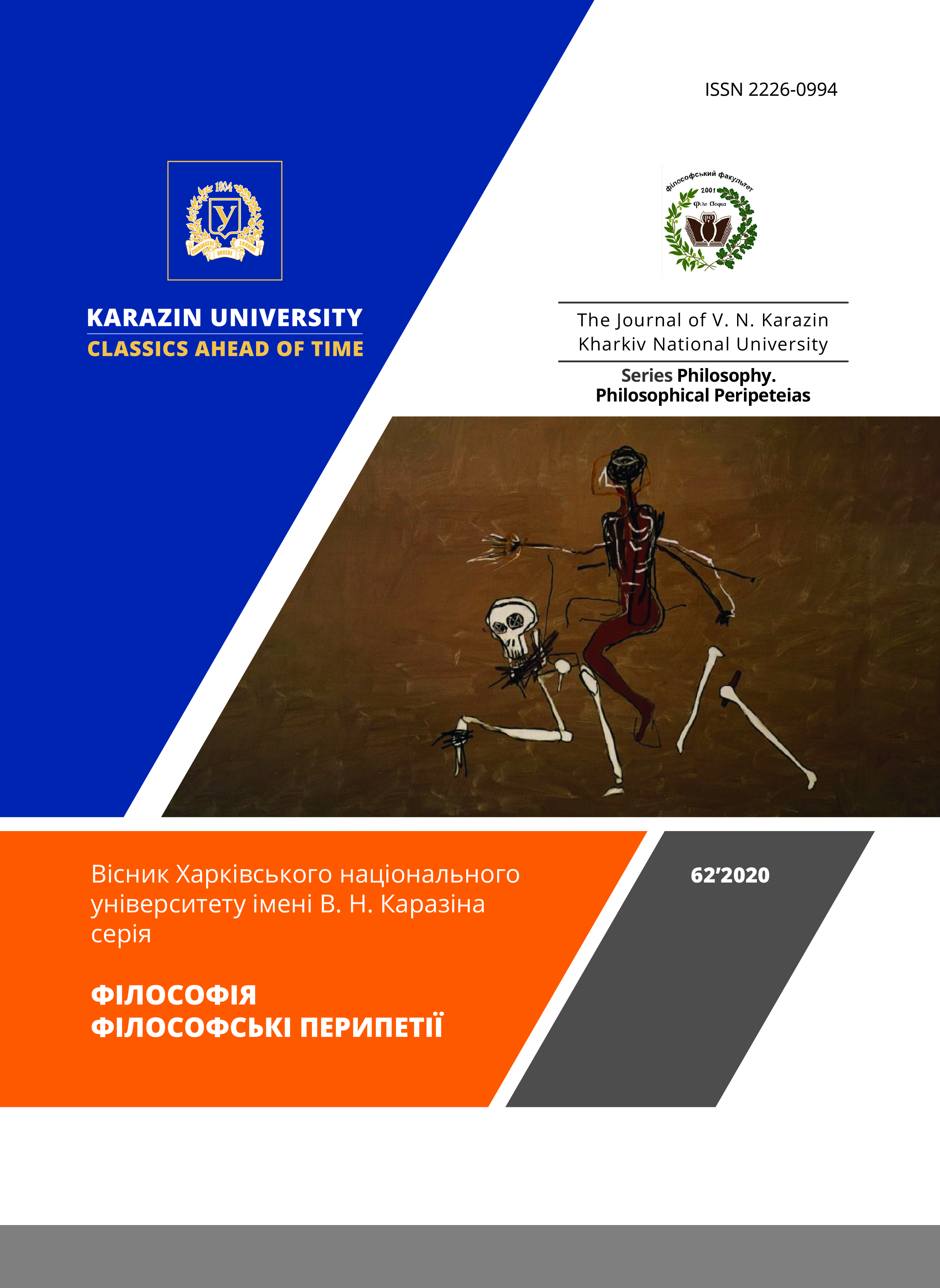WITHDRAWING TREATMENT AND KILLING: THE WAYS TO DISTINGUISH
Abstract
One of the key problems facing bioethics concerns those cases where, due to the limited human and technical resources of medicine, patients are in fact doomed to die. The reason for withdrawing treatment may be the futility of using the available means, as well as the burden of certain procedures. In the contemporary world, euthanasia is offered as an alternative to withdrawing treatment, that is, direct causing the death of a patient, killing. They distinguish these two types of practice by analyzing the duties of the physician, the intentions of all subjects, the differences between action and inaction. The obligation to save the patient at all costs should be rejected because of the non-humanity of this principle. That is why, however, the doctor faces a dilemma: to leave the patient to natural processes (it can cause, however, his or her additional suffering), or to kill him or her directly. The intention in both cases is to solve a problem in which the treatment of the patient becomes futile, and the withdrawing sooner or later leads to death. Euthanasia in its passive form may procedurally coincide with the withdrawing treatment. Withdrawing treatment is the decision, and therefore, it is more an action than inaction. It seems that the choice between euthanasia and withdrawing treatment is purely technical. The author of the article suggests comparing the mechanisms of decision making in the application of euthanasia and withdrawing treatment, looking at the purpose of these decisions and the means of its reaching. In the case of euthanasia, the purpose of action or inaction is to relieve suffering (a certain good), and the means is to cause death. In the case of withdrawing treatment, instead, the goal is also the good of the patient, but death is not a means but a side effect. Therefore, the author recognizes that withdrawing treatment is a more moral practice than euthanasia, which is a direct killing and is justified by the low value of one’s life.
Downloads
References
/References
Aszyk, P. (2006). Limits of Treatment. The Ethical Problem of Withdrawing Medical Interventions. Warsaw: Rhetos Publishing House. (In Poland).
Chańska, W. (2009). The Unfortunate Gift of Life. Philosophy and Ethics of the Quality of Life in Contemporary Medicine. Wroclaw: Publishing House of the University of Wroclaw. (In Poland).
Gradyk, R., & Shyrii, T. (2016). Moral and Ethical Aspects of Euthanasia. In Proceedings from Sixth National Congress on Bioethics, September 27–30, 2016 (pp. 42–43). Kyiv.
Harris, J. (1985). The Value of Life. An Introduction to Medical Ethics. London; New York: Routledge & Kegan Paul.
Hippocratic Oath. (2020, March 25) . Retrieved from https://web.archive.org/web/20091206063319/http://who-is-who.com.ua/bookmaket/ses2007/36/2.html.
Kuhse, H. (1987). The Sanctity-of-Life Doctrine in Medicine. A Critique. Oxford: Oxford University Press.
May, W. E. (2013). Catholic Bioethics and the Gift of Human Life. Third edition. Hungtington, Indiana: Our Sunday Visitor.
Deciding to Forego Life-Sustaining Treatment: President’s Commission for the Study of Ethical Problems in Medicine and Biomedical and Behavioral Research. (1983). Washington D. C.: U. S. Government Printing Office.
Градик Р., Ширій Т. Морально-етичні аспекти евтаназії. Шостий національний конгрес з біоетики, 27-30 вересня 2016: збір. конф. Київ, 2016. С. 42–43.
Клятва Гіппократа. URL: https://web.archive.org/web/20091206063319/http://who-is-who.com.ua/bookmaket/ses2007/36/2.html (дата звернення 25.03.2020).
Aszyk P. Granice Leczenia. Etyczny problem odstąpienia od interwencji medycznych. Warszawa: Wydawnictwo Rhetos, 2006. 207 s.
Chańska W. Nieszczęsny dar życia. Filozofia i etyka jakości życia w medycynie współczesnej. Wrocław: Wydawnictwo Uniwersytetu Wrocławskiego, 2009. 384 s.
Harris J. The Value of Life. An Introduction to Medical Ethics. London; New York: Routledge & Kegan Paul, 1985. 281 p.
Kuhse H. The Sanctity-of-Life Doctrine in Medicine. A Critique. Oxford: Oxford University Press, 1987. 240 p.
May W. E. Catholic Bioethics and the Gift of Human Life. Hungtington, Indiana: Our Sunday Visitor, 2013. 336 с.
Deciding to Forego Life-Sustaining Treatment: President’s Commission for the Study of Ethical Problems in Medicine and Biomedical and Behavioral Research. Washington D. C.: U. S. Government Printing Office, 1983. 554 p.

This work is licensed under a Creative Commons Attribution 4.0 International License.
Authors who publish with this journal agree to the following terms:
- Authors retain copyright and grant the journal right of first publication of this work under the terms of a license Creative Commons Attribution License 4.0 International (CC BY 4.0).
- Authors are able to enter into separate, additional contractual arrangements for the non-exclusive distribution of the journal's published version of the work (e.g., post it to an institutional repository or publish it in a book), with an acknowledgement of its initial publication in this journal.
- Authors are permitted and encouraged to post their work online (e.g., in institutional repositories or on their website) prior to and during the submission process, as it can lead to productive exchanges, as well as earlier and greater citation of published work.






3.gif)




